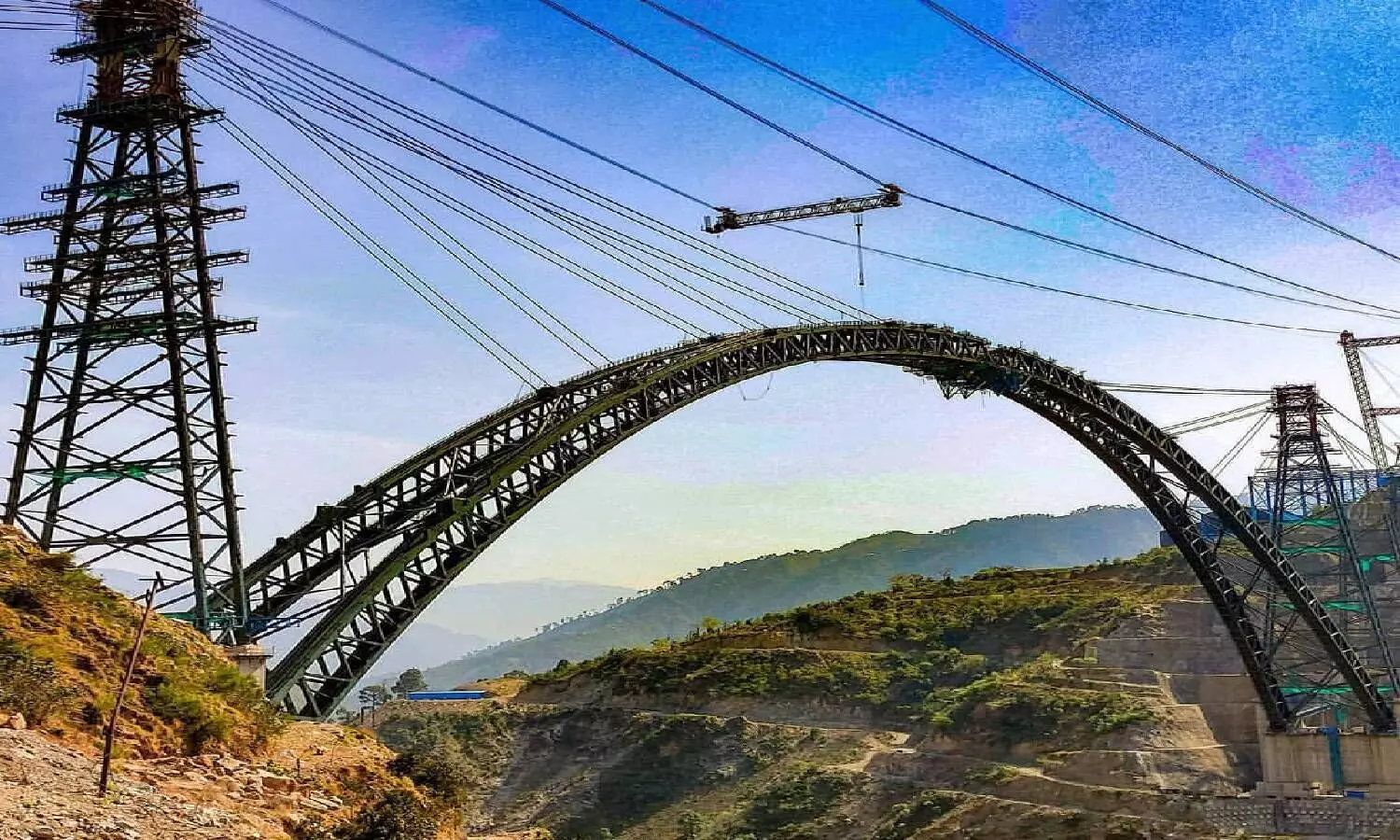Train to Kashmir becomes reality, arch of world's highest bridge completed
This rail project will provide all-weather connectivity to Kashmir and boost industrialization and other economic activities in the valley.
By Newsmeter Network
Srinagar: Indian Railways on Monday completed the Arch closure of the iconic Chenab Bridge.
Chenab Bridge, the world's highest railway bridge, part of the Udhampur-Srinagar-Baramulla rail link project (USBRL), set an important construction milestone today with the completion of the steel arch of the iconic Chenab Bridge.
This is the highest Railway Bridge in the world being 359m above the river bed level. It will be 35 meters higher than the iconic Eiffel Tower in Paris (France).
Railways complete the Arch closure of the iconic Chenab Bridge, World's highest railway bridge.
— Ministry of Railways (@RailMinIndia) April 5, 2021
Look at the video for the main features of USBRL Project & Chenab Bridge. pic.twitter.com/IdiJtNsdtk
This was one of the most difficult part of the bridge over Chenab. This achievement is a major leap towards the completion of the 111 km long winding stretch from Katra to Banihal. It is arguably the biggest civil-engineering challenge faced by any railway project in India in recent history.
The 5.6-meter last piece of metal was fitted at the highest point on Monday and joined the two arms of the arch that currently stretches towards each other from both the banks of the river. This completed the shape of the arch that will then loom over the treacherous Chenab, flowing some 359 meters below. After completion of the arch work, removal of the stay cables, filling of the concrete in the arch rib, erection of the steel trestle, launching of the viaduct, and track laying work will be taken up.
Construction
This bridge Construction of Bridge involved the fabrication of 28,660 MT steel, 10 Lakh cubic meter(Cum0 Earthwork, 66,000 Cum Concrete and 26 km motorable roads. The Arch of the bridge consists of steel boxes. Concrete will be filled in boxes of the Arch to improve stability. The overall weight of Arch is 10,619 MT. The total span is 17.
The erection of the members of the arch by overhead cable cranes was done for the first time on Indian Railways. The most sophisticated 'Tekla' software used for structural detailing. Also the structural steel suitable for -10°C to 40°C temperature. The cost of the bridge came at Rs 1486 crore.
Features
Bridge designed to withstand high wind speed up to 266 Km/Hour and will remain operational at a restricted speed of 30 Km/Hour even after removal of one pier/trestle.
The bridge designed for blast load in consultation with DRDO for the first time in India. Bridge designed to bear earthquake forces of highest intensity zone-V in India. It is for the first time in the history of Indian Railways that Phased Array Ultrasonic Testing machine was used for the testing of welds. Approximately 584Km welding was done to join the different parts of the structure, which is to the tune of distance between Jammu Tawi to New Delhi.
Also, the height of the cable crane's pylon at Srinagar End is 127m, which is much taller than Qutub Minar of 72m.
Significance
Jammu and Kashmir is a landlocked region. Connectivity has always been a problem. There is only one highway that connects Srinagar to Jammu. Traveling often is a problem because the highway is prone to landslides and avalanches. During winter, traveling on the highway is very difficult as it remains closed for weeks due to inclement weather.
Therefore a need was felt to have better connectivity and construction of a national railway project that will connect J&K with the rest of India was therefore proposed. The 345 kilometer Jammu-Udhampur-Katra-Qazigund-
Maharaja Pratap Singh had dreamed of the Kashmir rail project in 1898. A project was sanctioned in 1905 but it could not be implemented. After independence, Jammu got connected with the rest of India through rail. Indira Gandhi started work on the difficult Chenab section (which including Kashmir) in 1983.
This rail project will provide all-weather connectivity to Kashmir and boost industrialization and other economic activities in the valley.